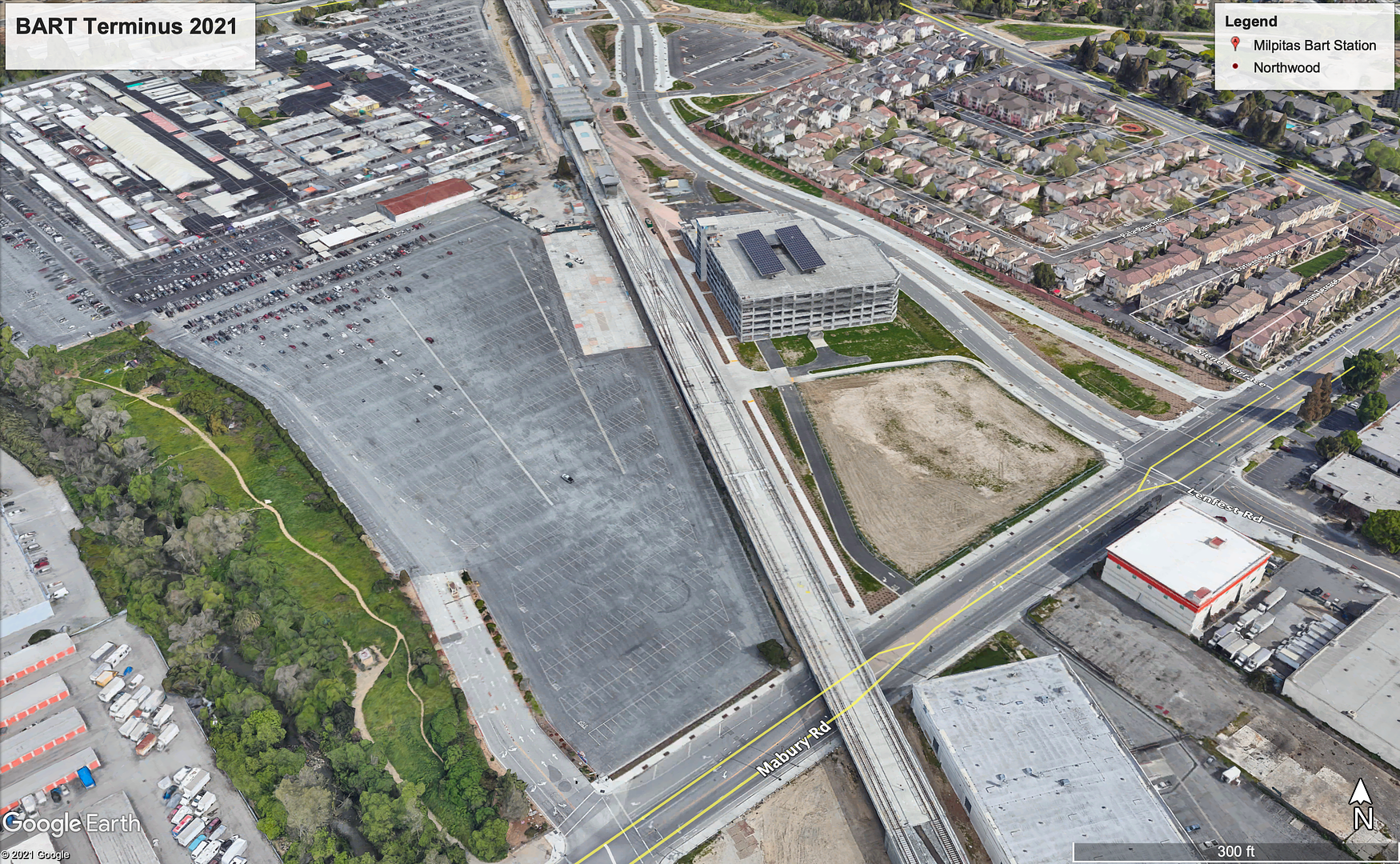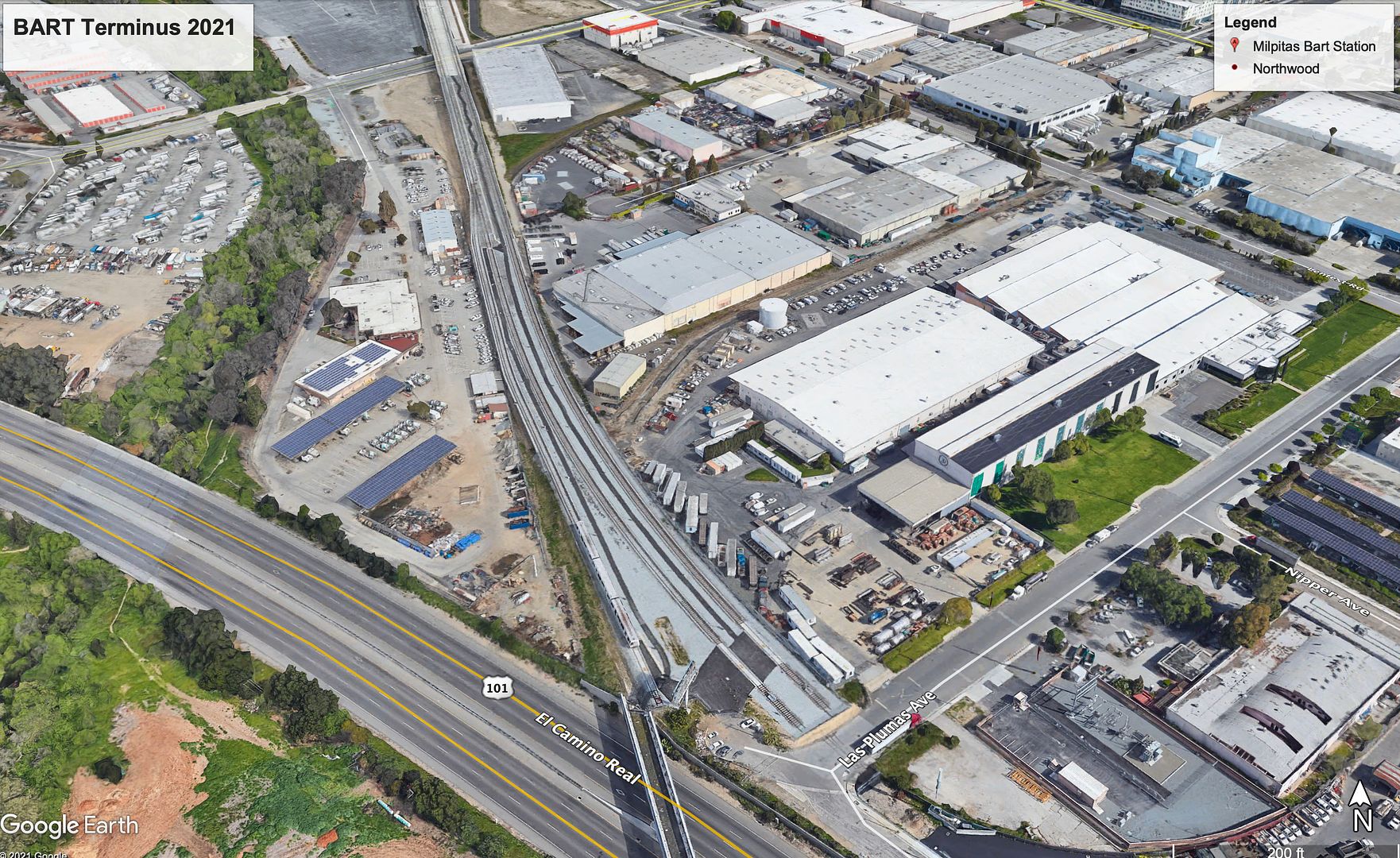Quote:
Originally Posted by Crawford

Yes, absolutely. There is an existing rail right of way that follows BART down the East Bay. They chose not to use it.
|
The whole branch between Oakland and San Jose is built adjacent, above, and at times entirely in place of a freight rail corridor. The recent two station extension toward San Jose was built on this same corridor. A freight spur crosses over the new BART tracks just north of the new Milpitas station.
Back when Obama was President:

Now:

The new BART tracks travel beneath three cross streets and a freight railroad spur within a stone's throw of the Milpitas station. It might have cost less to keep the BART tracks depressed in this area than to elevate them.
Just north of the Milpitas station, the line is still in a trench:

The current terminus has a huge amount of non-revenue track. The active corridor continues for 3,200 feet past the terminal platform, with a crossover and spur totaling 7,500 feet of track. There is space to park no fewer than
seven of BART's 710-foot trains. Much of this non-revenue track is on an aerial structure.


Anyway - this line will serve downtown San Jose and the California High Speed Rail station in San Jose, meaning the East Bay BART extensions in recent decades will eventually have significant bidirectional traffic.



